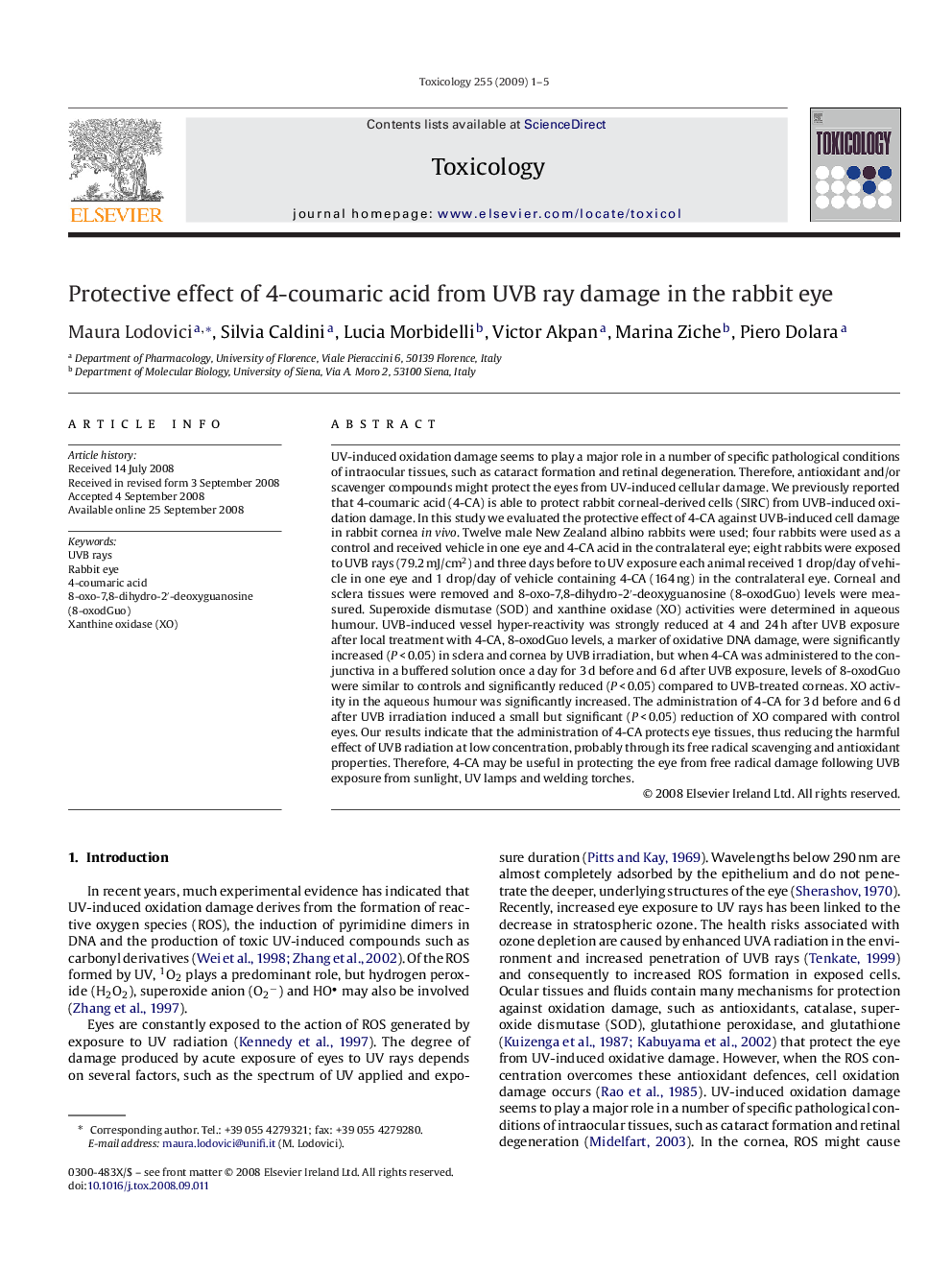| کد مقاله | کد نشریه | سال انتشار | مقاله انگلیسی | نسخه تمام متن |
|---|---|---|---|---|
| 2596920 | 1562400 | 2009 | 5 صفحه PDF | دانلود رایگان |

UV-induced oxidation damage seems to play a major role in a number of specific pathological conditions of intraocular tissues, such as cataract formation and retinal degeneration. Therefore, antioxidant and/or scavenger compounds might protect the eyes from UV-induced cellular damage. We previously reported that 4-coumaric acid (4-CA) is able to protect rabbit corneal-derived cells (SIRC) from UVB-induced oxidation damage. In this study we evaluated the protective effect of 4-CA against UVB-induced cell damage in rabbit cornea in vivo. Twelve male New Zealand albino rabbits were used; four rabbits were used as a control and received vehicle in one eye and 4-CA acid in the contralateral eye; eight rabbits were exposed to UVB rays (79.2 mJ/cm2) and three days before to UV exposure each animal received 1 drop/day of vehicle in one eye and 1 drop/day of vehicle containing 4-CA (164 ng) in the contralateral eye. Corneal and sclera tissues were removed and 8-oxo-7,8-dihydro-2′-deoxyguanosine (8-oxodGuo) levels were measured. Superoxide dismutase (SOD) and xanthine oxidase (XO) activities were determined in aqueous humour. UVB-induced vessel hyper-reactivity was strongly reduced at 4 and 24 h after UVB exposure after local treatment with 4-CA, 8-oxodGuo levels, a marker of oxidative DNA damage, were significantly increased (P < 0.05) in sclera and cornea by UVB irradiation, but when 4-CA was administered to the conjunctiva in a buffered solution once a day for 3 d before and 6 d after UVB exposure, levels of 8-oxodGuo were similar to controls and significantly reduced (P < 0.05) compared to UVB-treated corneas. XO activity in the aqueous humour was significantly increased. The administration of 4-CA for 3 d before and 6 d after UVB irradiation induced a small but significant (P < 0.05) reduction of XO compared with control eyes. Our results indicate that the administration of 4-CA protects eye tissues, thus reducing the harmful effect of UVB radiation at low concentration, probably through its free radical scavenging and antioxidant properties. Therefore, 4-CA may be useful in protecting the eye from free radical damage following UVB exposure from sunlight, UV lamps and welding torches.
Journal: Toxicology - Volume 255, Issues 1–2, 8 January 2009, Pages 1–5